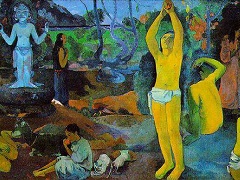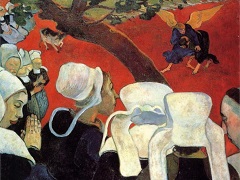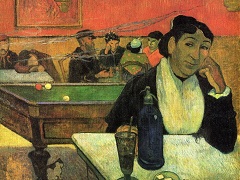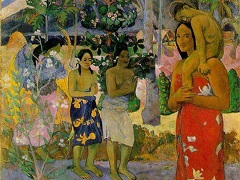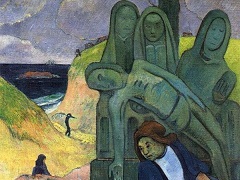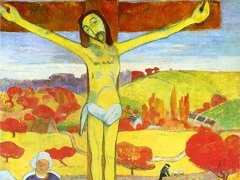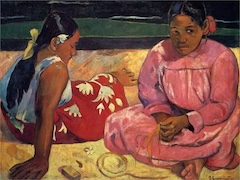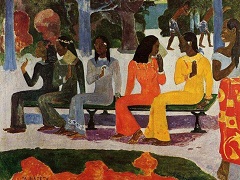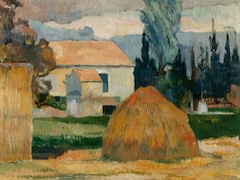Tahitian Women on the Beach, 1891 by Paul Gauguin
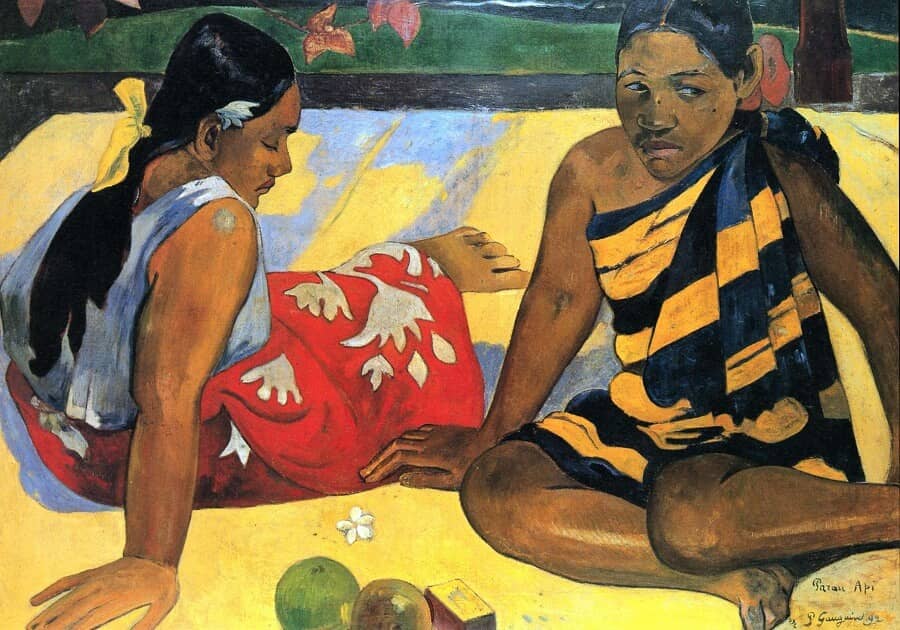
After arriving in Tahiti in June 1891, he painted Tahitian Women on the Beach that summer. He shows two women sitting in the sand, one facing the viewer, one facing away. The young woman on the left sits with her back towards us, her head down, indifferent to the viewer. She wears a red Pareo, cloth wrapped around the body forming a skirt, with a white floral print and white top. Her dark hair is tied back with a yellow ribbon, an influence of western contact, contrasted with a white flower behind her hair. She leans on her right arm creating a straight hard edge within the painting. The woman on the right is shown facing the viewer and not just in a contemplative stare; she is performing an action. She sits with her legs crossed as she weaves fiber to start a basket. Like the woman on the left, this woman doesn't interact with the viewer. Her gaze goes beyond. Unlike the woman on the left, she wears a full dress influenced by the missionaries. Neither woman is shown exactly as she was. You would not confuse Gauguin's paintings for photographs. He shows them with distorted proportions, faces that can resemble masks, and colors separated by dark outlines.
They are both shown in stark contrast against the light sand they sit in. Behind them the green water of the lagoon sits before the blackness of the sea, highlighted with the white from the waves breaking. The painting shows
duality in both the foreground and background. With the two women, we see the rich history of Tahiti - one woman dressed in the traditional sarong while the other shows western influence. One woman sits unoccupied by anything,
while the other faces the viewer, performing one of her daily duties, weaving the basket. Like the women, we have calmness in the lagoon and movement in the sea.
Gauguin went to Tahiti to discover the primitive and purity in Polynesian life and escape the modern France, but he almost immediately found and started painting the melancholy of the women and the colonial influence.

